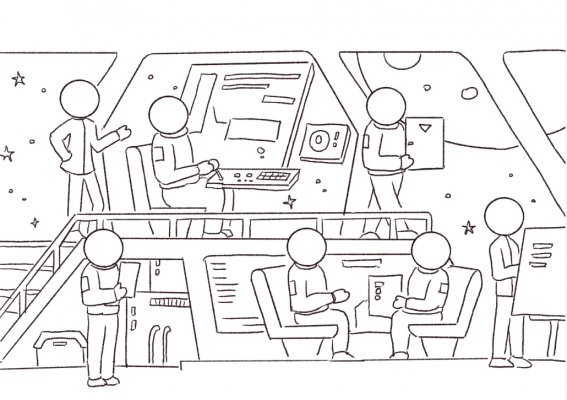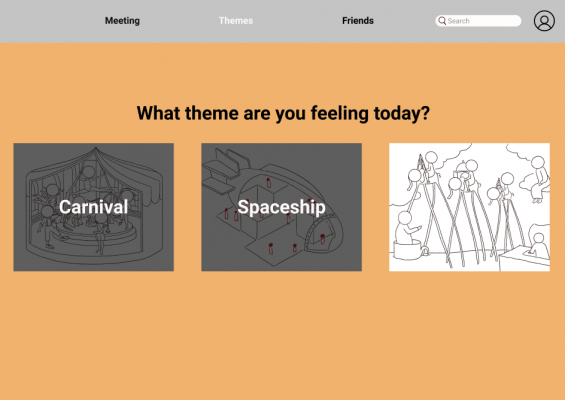
Rough sketch by Ada Tam
Project team members: Dr. Pennefather (PI, Faculty in Residence), Dante Cerron (Lead Software Developer, EML Staff), Olivia Chen (Theatre and Film Student), Ada Tam (Master of Digital Media Student)
In an unprecedented crisis that had workplaces across the globe move their operations online, video calls became the primary channel of communication. Has video communication in its current state been effective, though? Apart from “Zoom fatigue”, video calls have limited features that don’t create the same professional atmosphere and interactive environments that exist in meetings in person. The past year of remote offices and meetings has made one thing clear: there exists a massive opportunity for software developers to elevate the online working experience.
One of the Emerging Media Lab’s current projects, Virtual Co-Locator, aims to address this gap by creating an alternative video calling platform that seeks to include more features and effects such as facial detection and creative backgrounds to allow video meetings to be customized to suit different settings, moods, and topics. For example, for calls that involve round table discussions, Virtual Co-Locator is working on leveraging facial detection technology to composite attendees’ faces into a shared virtual background that would look like a round table office environment. The basic idea is to make video meetings more interactive and create a virtual environment that enhances the traditional video calling experience.

But how would this work? Let’s take a look at developing the technology.
The first stage of this project involved developing a server using Node.js, an open-source JavaScript runtime environment. Then, the team implemented peer-to-peer (P2P) technology using WebRTC, which allows for a decentralized way for computers to connect with each other. The peer-to-peer technology works by receiving a message from one client called the watcher, and another client called the broadcaster. Once the watcher and broadcaster are registered in the server, the server makes a direct connection between the watcher client and the broadcaster client, allowing for direct communication between the two computers and facilitating the transmission of audio and video streams.
To put this in a classroom context, a professor could join the watcher client of this server and have the students join the broadcaster client for the same session and host a virtual classroom call. The advantage of using a peer-to-peer network is that, because it’s decentralized, it greatly diminishes the load on the server, as once the computers have been connected, the server does not have to process sending audio and video streams between computers.
Currently, the team at EML is working on implementing facial recognition models on the first iteration of the Virtual Co-Locator web application. The team is gathering premade facial recognition models from TensorFlow, an open-source machine learning software library.
By the end of this term, the team hopes to provide a publicly accessible Node.js server that does virtual co-location of four people in a background of their choosing. The eventual goal is to iterate upon this and create a Virtual Co-Locator web application which would be an interactive alternative to conventional video calling platforms by allowing for more features and virtual environment simulations.
Some examples of different meeting environments that can be implemented in Virtual Co-Locator include coffee shops, studios, classroom halls, seminars, roundtables, and keynote speeches. Stay tuned for the end-of-term EML showcase to hear more about the project’s developments!